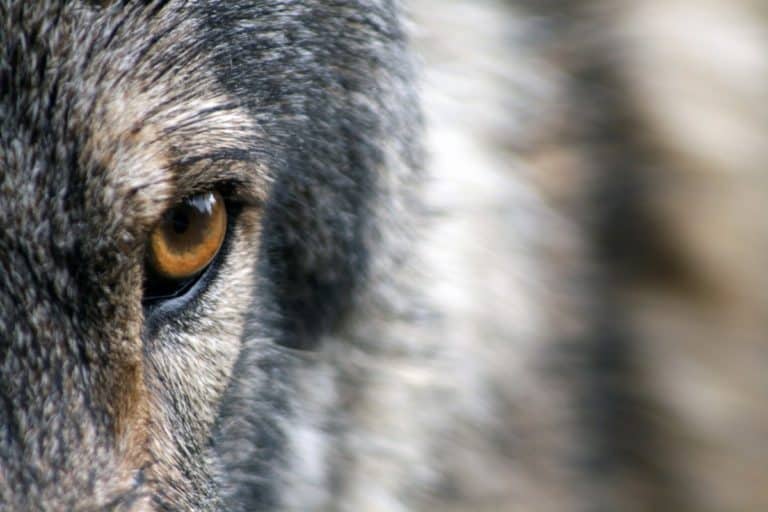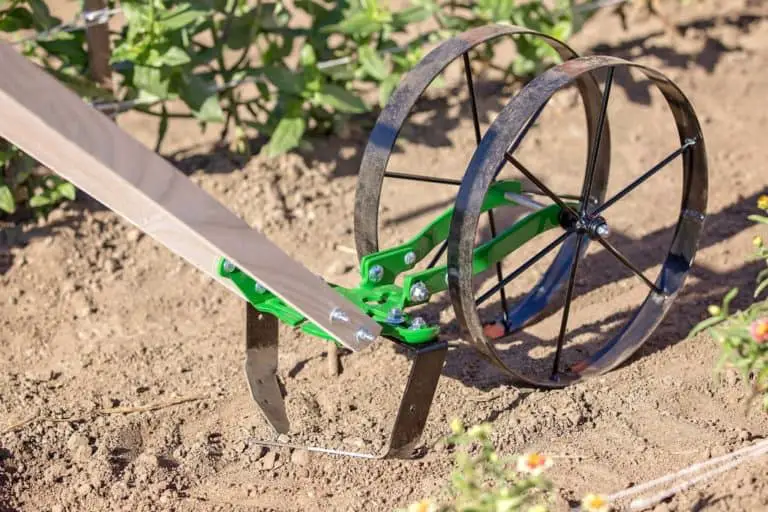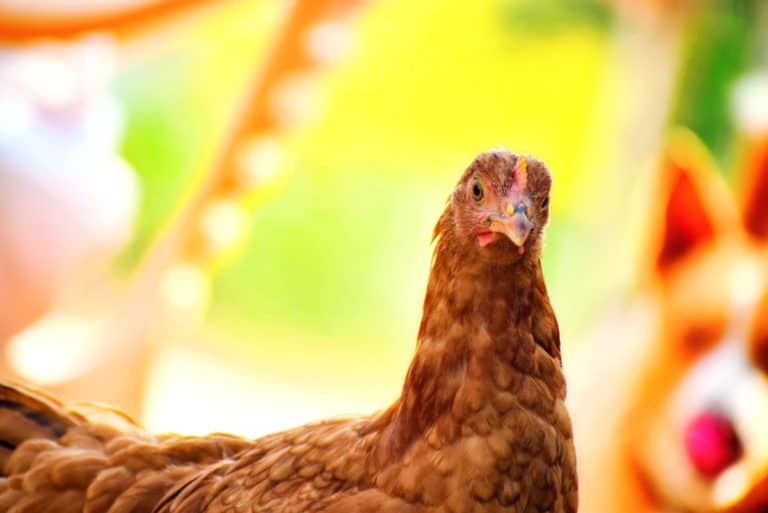
Blackberries are highly nutritious and contain a wide array of important nutrients including potassium, magnesium, and calcium, as well as vitamins A, C, E and most of our B vitamins. They are also a rich source of powerful antioxidants that give blackberries their deep purple color.
Native Americans used many parts of the Blackberry plant for treating diarrhea, fluid retention, diabetes, gout, and pain and swelling (inflammation). It is also used as a mouth rinse for mild mouth and throat irritation.
And, thankfully, raising blackberries is easy and can be very rewarding. But there are a few things to consider before you begin.
Location, Location, Location
First, there is the location. Blackberries need full sun. Actually, they seem to love full sun. Here in Texas, we can have some sweltering summer days, but as long as the blackberry plants are watered, they seem to thrive. So, full sun is a must. Having said that, there was a time that a particular blackberry patch I had got some afternoon shade, and they did well also. So, if it’s “mostly sunny”, you should be OK too.
There are so many varieties of blackberries that many articles could be written just discussing them and their characteristics. So, I’ll just divide them into 4 categories, Thorned, Thornless, Primacane, and Floracane.
Thorned and Thornless.
Having grown thorned and thornless, let me say that I absolutely prefer thornless. If you have a U-Pick blackberry business, so will your customers.
It’s easy to describe the difference in their characteristics. Obviously, one has thorns and the other does not. The thorns can be brutal. Yes, after a while you’ll get used to reaching in and out of the hedge without getting too many battle scars, but since there are so many excellent thornless varieties, why would you want to deal with the thorns? So, I definitely recommend the thornless varieties.
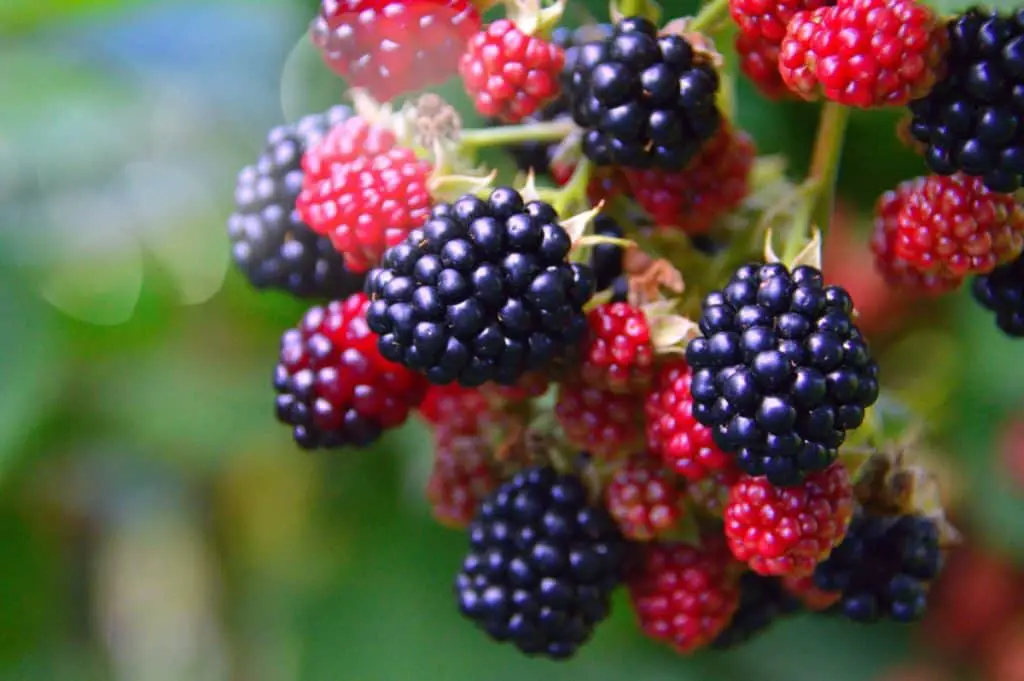
Some good thornless varieties are Prime Ark Freedom, Prime Ark Traveler, Triple Crown, Arapaho, Natchez, and Quachata just to name a few. All are great producers and all will have their own characteristics such as early maturing, late maturing, sweetness (or Brix level) growth habits and the Climate Zones they do best in.
I would start by visiting your local nursery that sells berry plants. They should have varieties that are best for your location and direct you to the ones that have done well for their customers. Your local nursery is one of the best resources you can have.
I strongly suggest you don’t buy your berry plants at a big box store. They could have been raised a thousand miles from your zone and may not be the variety that is right for your location at all. Develop a relationship with a good local grower. You won’t be sorry you did.
Now, I’m not saying don’t buy online. I have bought a lot of blackberries online, but it was after I did my research as to what berry varieties did best in my area. Some great sources to buy blackberry plants online are Bob Wells Nursery, Nourse Farms, Stark Brothers, and Simmons Plant farm.
They are all competitive, and from what I’ve seen have some great stock. But again, find out what does best in your area, either from a local nursery or from your local Ag Extension Department.
Primacane vs Floracane
Here’s where the terminology can get a little confusing.
The first year’s canes (the new plant you just bought, or the new canes they shoot up in the spring) are called the “floricane”. Blackberries have roots and crowns that are perennial, but the life cycle of the cane is just two years. The first year in the cycle is when the primocanes (the new shoots) grow. The following season, those same shoots will be called “floricanes”.
Think of it this way, the primocane is the “newborn” in your patch and the floricane is the “2-year old”. The primocane growth is vegetative, while the floricane growth produces fruit and then dies back so the cycle can start again.
Remember that. After a floricane produces fruit, it dies. No, the plant does not die, but that particular cane dies. That’s why it sends up new canes (the primocanes) each spring… to replace the 2-year old’s that are about to fruit, and die. It can seem confusing, but it’s really not. Just remember the “newborns” are the primocanes and the toddlers are the floricanes.

Now, to add to the confusion, there are 2 different varieties also. The Primocanes and the Floricanes. I capitalized them to try to differentiate them from the kids in the nursery.
Primocane varieties are something fairly new to the blackberry industry. They actually will make fruit on the first-year canes (the primocanes). Now, my experience is that the first year’s crop is a lot less plentiful, but it is a crop nonetheless.
Although it’s considered a “fall crop”, for me, it was more of an “everbearing” crop, starting after the floricanes had stopped producing. Here in east Texas that was around mid-July.
In my opinion, having a Primocane variety is not necessarily beneficial because of the small crop in the first year. But, my Primocanes produced a ton on the same canes the 2nd year. A ton.
Planting Your Blackberries
I want my rows straight, so I use a string line to make them straight. I ripped down the row with a “ripper” on my tractor. Some call it a “sub-soiler”. It goes about 12” to 18” deep. My soil is terribly hard. It’s red clay with some iron ore gravel mixed in, but I have had excellent results planting like this, so I believe you can plant these just about anywhere.
I recommend (if you’re planting more than just one row) that you make your rows at least 8 feet apart. If you have the room, plant the rows 12 to 15 feet apart. You won’t be sorry that you did. Why? Well, as the years go by, the plants will send up new canes to reproduce the “mother” plant.
Those canes will not come up in the exact straight line you planted them on. They will be off to the side a few inches or a few feet. What I’m saying is this… the width of the planted row pf blackberries will widen over the years making the walkways shrink considerably.
If you plant the rows 6 or 8 feet apart the walkways might shrink to 3 or 4 feet wide. That’s really too narrow to mow in between and doesn’t leave a lot of room for picking.
Tip: Plant your rows as far apart as you can with the land you have available
Most of you don’t have a Ripper on your tractor, so I would suggest that you just dig a trench. Your trench just needs to be maybe six inches wide or so. If you have good soil, you shouldn’t have to make it too deep.
If you have clay soil as I do, I would try to dig a trench around 12″ deep. Or, instead of digging a trench, you can just dig individual holes, put your compost/peat/soil mix in it and backfill with some of the original soil, and mix it together.
Don’t plant in straight compost. You’ll want to have some of the original soil in there too. I just mix the soil from the hole I just dug and the compost together and plant in that. Plant the individual blackberry plants 3 or 4 feet apart. That’s plenty of room for them. And, in the coming years, they will send up new canes to fill in any gaps between them.
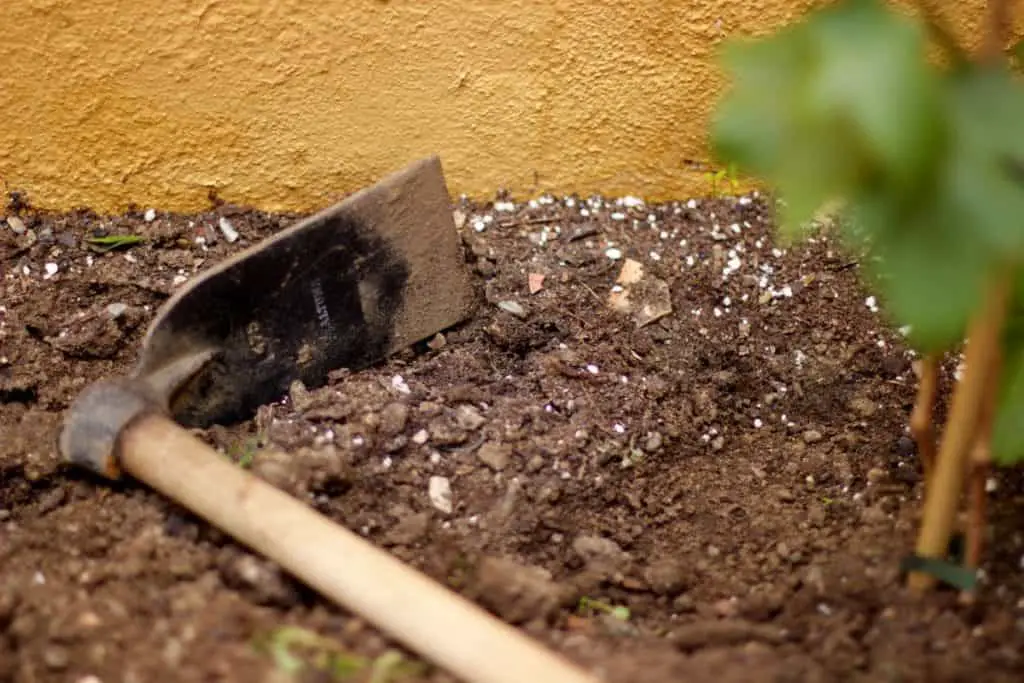
Okay, so we got the soil mixed with the compost. You want to plant to the same depth that it was in the nursery pot, or if it’s bare-root, plant at the soil line on the bare-root. You don’t want to go too shallow you don’t want to go too deep. Just plant at the same depth it came in that the pot.
After that, I top dress with some more compost and then probably come back and add more compost on top of that after another week or two or once they grow up a little bit. Later, I’ll come back with a layer of mulch. Mulch will help them retain the moisture, and act as a weed block.
I pull any leaves out of the way as I top dress so the leaves don’t get buried under the compost, and I water them well as soon as I get through planting. I don’t want to wait. I want to water it in. That seals all that soil and compost mix around the roots so there are no air gaps.
You definitely want to water this (and most anything you plant) as soon as you put it in. I’ll put my drip irrigation on this, and it should take off should start growing like crazy.
When To Plant?
Well, that depends on where you are. I’m in east Texas. I like to plant in the late fall. Our winters aren’t all that bad and it’s very unlikely we will get temperatures that are cold enough to harm the young plants and roots.
However, if you’re way up north, the extreme cold you “enjoy” might hurt any young plants for sure. You will probably want to wait till late winter or early spring to plant. But again, your Ag Extension Agent will be a valuable asset and can tell you what is the best planting time in your area.
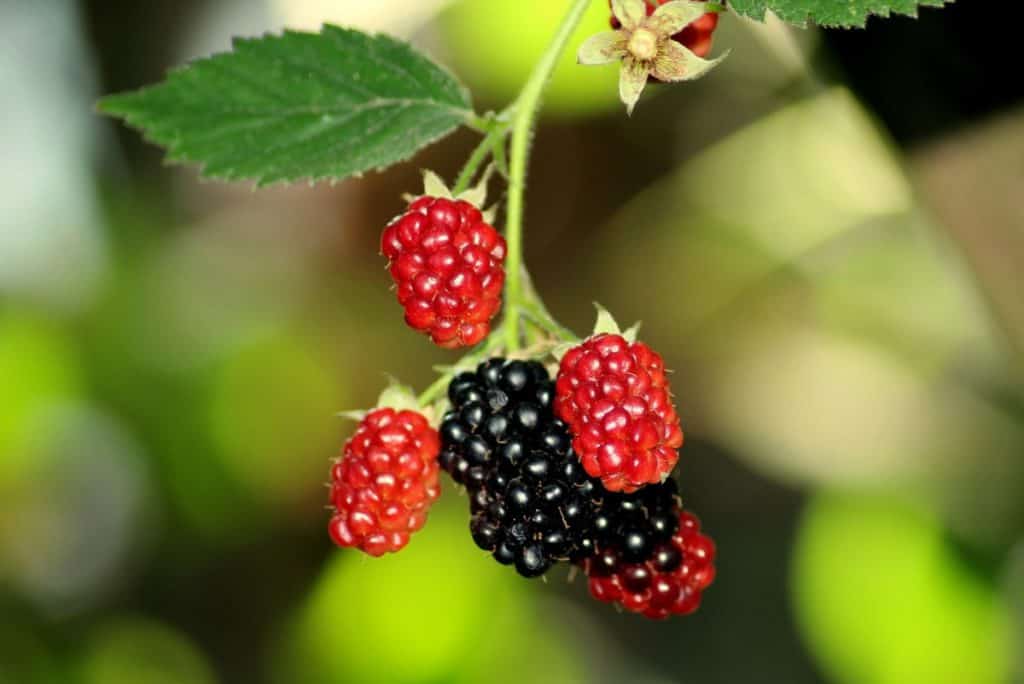
But wherever you are, if you have some extra sunny space, plant some blackberries. They are a wonderful addition to the edibles in your garden and on your homestead and are an amazing source of vitamin C and antioxidants.
In the coming days and months, I’ll be writing a lot more content about raising blackberries. I had a commercial U-Pick blackberry operation that was very rewarding, and look forward to sharing my experiences. If you want to start raising blackberries commercially, or just for your own consumption, I’ll be sharing with you in future posts. So, look for them.
As always, I know your time is valuable, so I thank you for spending some of it here.
I have around 800 videos on my YouTube channel dealing with every aspect of raising blackberries and just about any other Homesteading related topic. You can find them HERE


